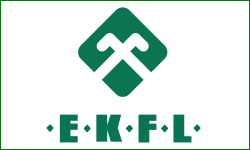 A survey by SEB shows that in terms of current income levels and property prices, residents in the Baltic capitals can now become owners of bigger flats than a year ago. The SEB home purchasing power index* has improved thanks to increased real wages and low interest rates, an analysis by SEB banks in Estonia, Latvia and Lithuania indicates.
A survey by SEB shows that in terms of current income levels and property prices, residents in the Baltic capitals can now become owners of bigger flats than a year ago. The SEB home purchasing power index* has improved thanks to increased real wages and low interest rates, an analysis by SEB banks in Estonia, Latvia and Lithuania indicates.
Compared to the other Baltic States, new flats are the most affordable in Tallinn, where the home purchasing power index rose by 2.9 square metres to 37.8 square metres year on year. Although the index rose in the capitals of Latvia and Lithuania as well, residents in Riga and Vilnius on average incomes are able to afford significantly smaller flats, measuring 29.2 and 26.0 square metres, respectively.
It would take residents in the Baltic capitals on average incomes 20 or more months to save up for a ten per cent downpayment to buy a flat of 40 square metres in a new building, provided that the residents in the capital cities save 30 per cent of their income every month. In this case, the residents in Tallinn would be able to save up for the downpayment in less than two years (19.9 months), whereas it would take the residents in Riga and Vilnius longer, 25.6 and 28.9 months, respectively. However, where the purchase of a flat requires a 20 per cent downpayment, the time required for saving up doubles.
Eerika Vaikmäe-Koit, Head of SEB Retail Banking and Technology Area, noted that the increase in the home purchasing power index is strongly correlated to the decline in the home loan interest rates in the second quarter of 2015, hitting record lows in Lithuania and Estonia. “The lowest interest rate for new home loans in the second quarter this year was recorded in Lithuania: 2.03 per cent. It was 2.64 per cent in Estonia and 3.42 per cent in Latvia,” Vaikmäe-Koit said.
*The SEB home purchasing power index indicates in square metres the size of a flat that a resident with average income is able to purchase using a loan without taking an overly high risk. The index takes into consideration four factors that influence the home loan market: property prices, income, inflation and interest rates.














